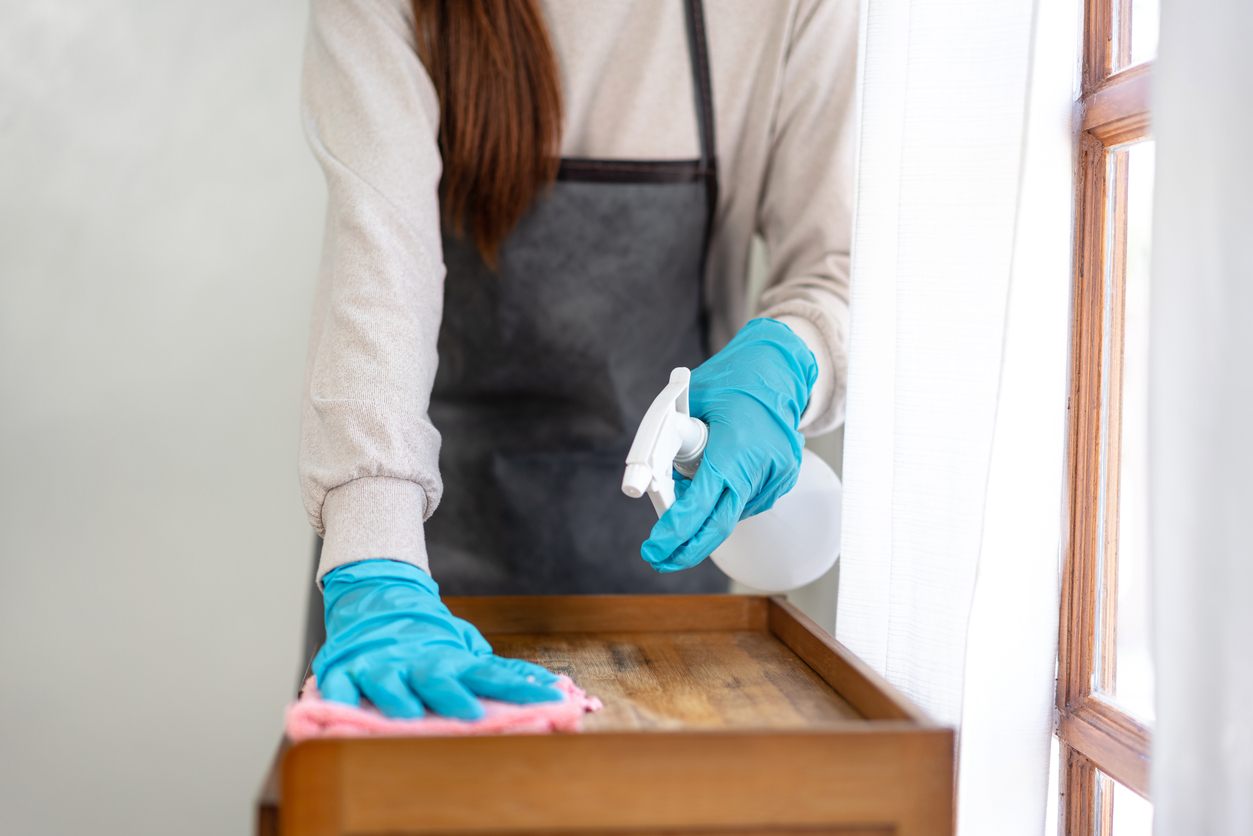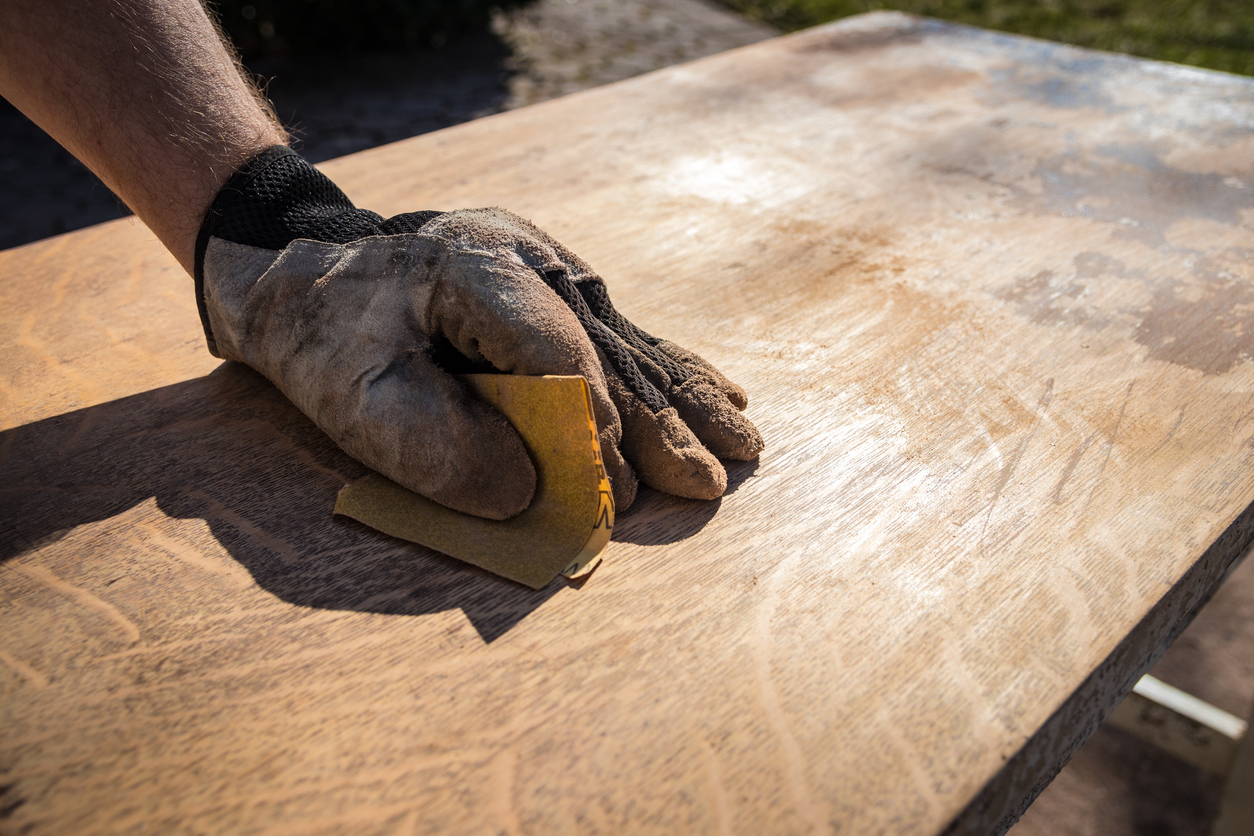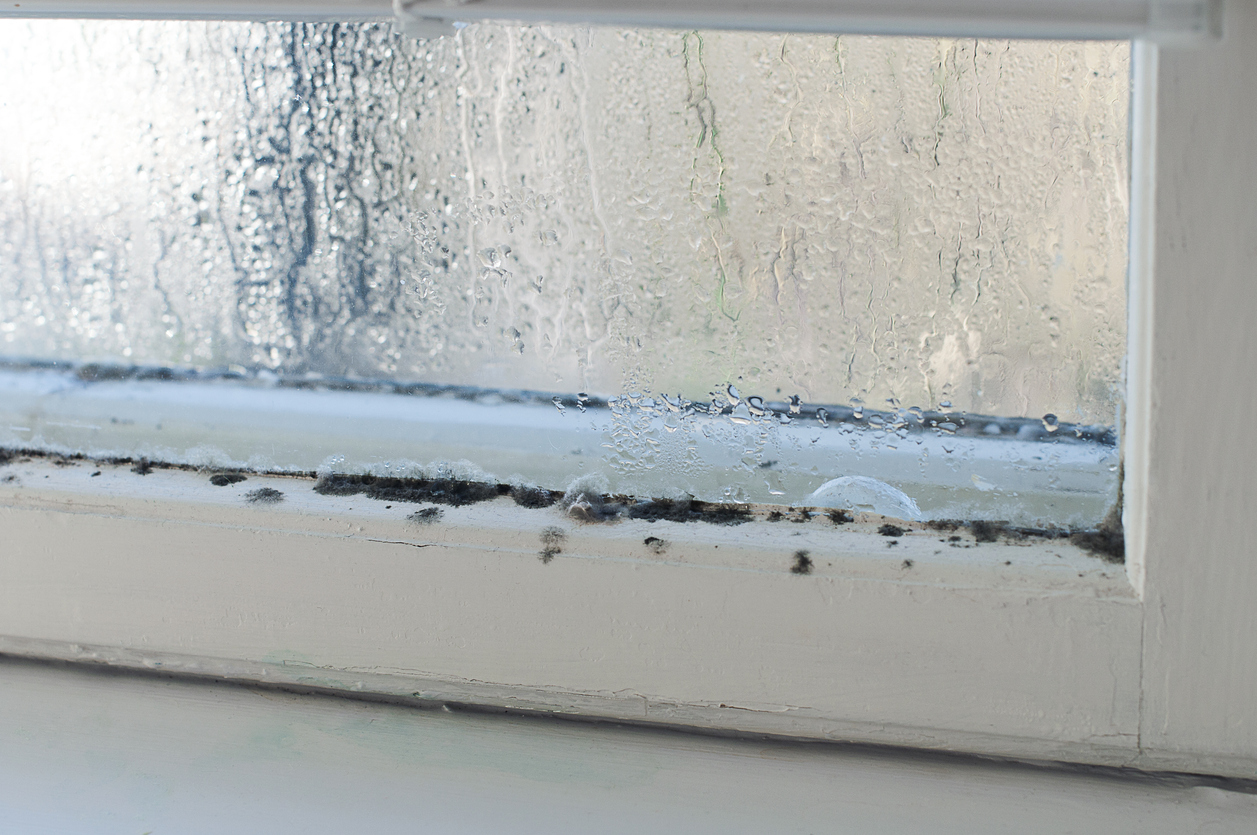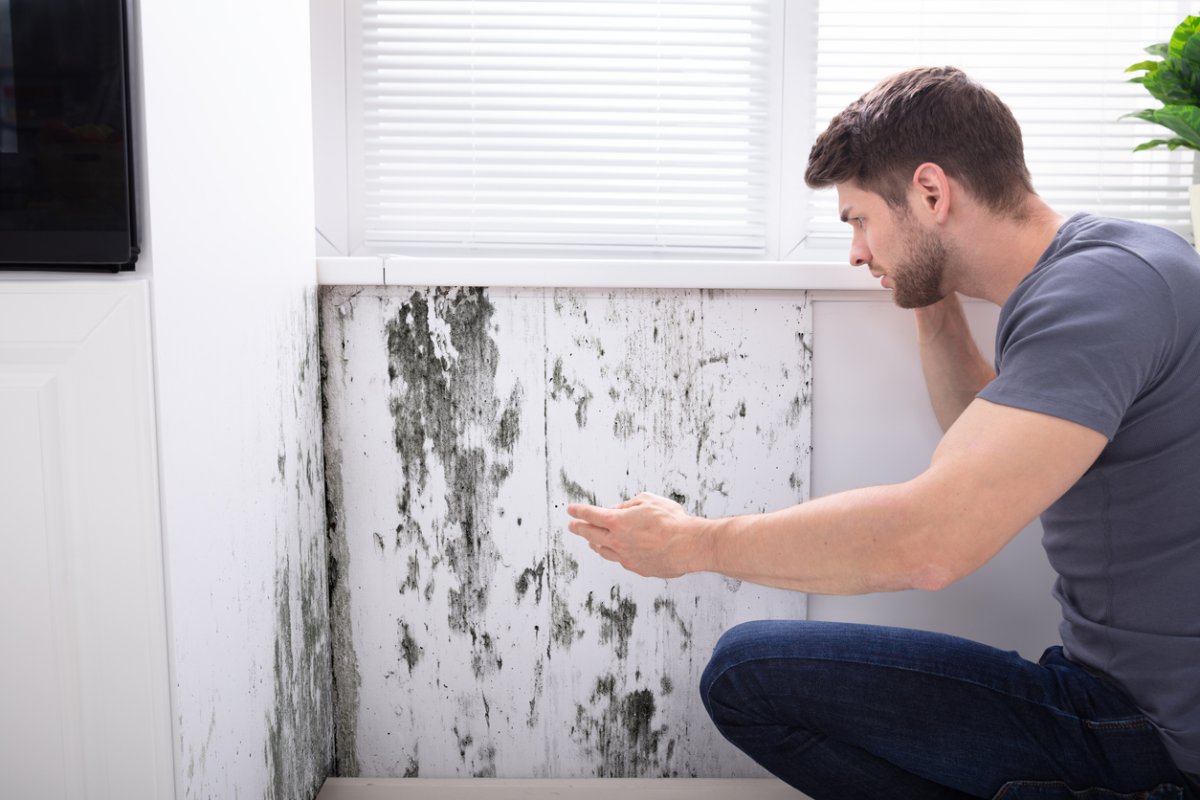We may earn revenue from the products available on this page and participate in affiliate programs. Learn More ›
Because wood naturally soaks up and retains water it’s an ideal environment for mold and mildew. If you have baseboards, trim, or furniture that’s been affected, prompt mold cleanup is in order. Acting quickly not only minimizes how much cleaning you’ll have to do, but also ensures that mold does not compromise your family’s health. As long as the spores haven’t spread over an area larger than about 10 square feet, you can take care of the problem yourself. Learning how to remove mold from wood is a skill that can save you money, and a call to a professional mold remediation specialist.
Tools & Materials
Bobvila.com may earn a commission from purchases made through these links.
- Respirator mask
- Rubber gloves
- Safety goggles
- Vacuum with HEPA filter
- Soft-bristled scrub brush
- Spray bottle
Project Overview
Working Time: 1 to 4 hours
Total Time: 1 to 3 hours
Skill Level: Intermediate
Estimated Cost: $0 to $25
Before You Begin
While it’s important to remove mold from living spaces as promptly as possible, the process of removing it yourself could increase your exposure to mold spores that are released into the air, which can pose some serious health risks if inhaled or if they come into contact with your skin or eyes. To ensure your safety when removing mold from wood, wear appropriate protective clothing and equipment (more on this below), and make sure the area you’re working in is well ventilated. Consider turning on a fan to keep airborne spores away from you.
Step 1: Don protective equipment.
Take the appropriate safety measures to keep yourself safe. Wear rubber gloves and safety goggles and importantly, don an air mask to prevent mold spores from getting into your lungs. If you intend to use a cleaning solution that contains bleach, wear protective outerwear in order to safeguard your clothing against stains.
RELATED: How to Test for Mold in Your Home in 6 Steps—(Even If You Can’t See It)
Step 2: Vacuum the area.
Using a machine equipped with a HEPA filter, vacuum the affected area of wood to remove any loose mold spores (along with any other accumulated dirt and debris). Once you’re done, empty the vacuum bag or canister into a plastic bag outside the house. Tightly seal the bag and dispose of it.
Step 3: Clean the mold with soap and water, and then with vinegar.

If the wood you’re dealing with is painted or stained, that means the mold has not penetrated. You can therefore stick to a mild cleaning solution: a simple mixture of dishwashing detergent and warm water. Dip a soft-bristled scrub brush into the soapy water you’ve prepared, then gently go over the moldy area.
This soap scrub may not be enough to remove the mold, at which point it’s time to apply vinegar, an effective mold killer. With a spray bottle filled with vinegar, spritz the mold and then let the vinegar sit for an hour to work its magic. Once enough time has elapsed, wipe down the wood with a clean, damp towel. Inspect the wood for any remaining mold, and if you don’t see any, wipe the wood down with a rag.
RELATED: Solved! Does Vinegar Kill Mold?
Step 4: Apply a bleach solution.
If mold has penetrated the wood, you are going to need a solution that’s capable of killing spores beneath the surface. To that end, mix 1 part detergent, 10 parts bleach, and 20 parts warm water. Apply your solution to the moldy area by means of a scrub sponge or a stiff-bristled brush, then allow the solution to air dry on the wood.
Step 5: If mold remains, sand the area.

If mold remains even after scrubbing in step 4, it’s time to take reach for the sandpaper. An abrasive might not seem like the obvious solution, but sanding is the only way to reach the mold deep within the wood. Work the sandpaper slowly around the affected area until you see no more signs of mold. After sanding, it’s a good idea to refinish the wood, not only for appearances’ sake, but also to prevent a future outbreak. Finally, get rid of all the rags and such that came into contact with the mold, and start trying to figure out how to limit the amount of moisture present in the area where you’ve been working.
RELATED: The Best Mold Test Kits to Ensure Healthy Air in Your Home
Final Thoughts
While professional mold remediation is always an option, it can be expensive. Depending on the amount of mold present on wood surfaces, however, you can often get rid of mold yourself. By following the recommended precautions like wearing protective clothing and goggles, working in a ventilated space, and using effective cleaning solutions, you can effectively remove mold without compromising your well-being. It’s important to note, however, that early remediation is key to prevent mold from spreading or risk of exposure.

FAQs
To remove black mold from wood, mix water with dishwater detergent in a spray bottle and gently scrub the molded area. Wear safety goggles and rubber gloves to limit exposure.
To remove white mold from wood, wet a clean rag with white vinegar and place it over the area where the mold is present. Leave it on for up to three days. Gently wipe the area with soapy water and dry. Wear safety goggles and rubber gloves to limit exposure.
While it depends on how much mold there is to remove, distilled white vinegar has been shown as the most efficient method for effective mold removal.

